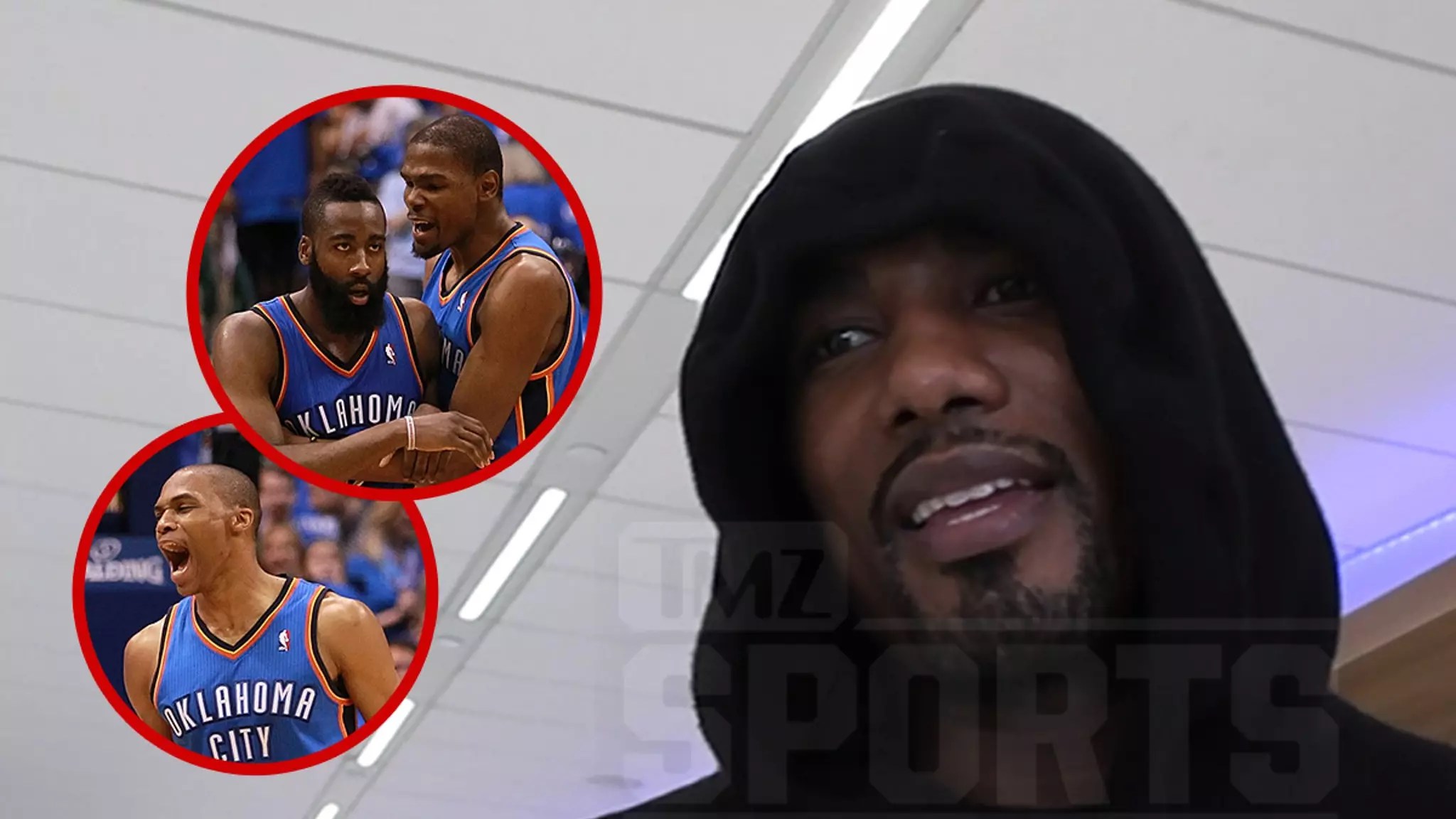The story of the Oklahoma City Thunder’s “Big Three” — Kevin Durant, James Harden, and Russell Westbrook — is a narrative riddled with what-ifs and missed opportunities. Serge Ibaka’s recent remarks highlight a tantalizing possibility: had management managed to retain this star-studded trio, Oklahoma City might have transformed from a promising contender into an NBA dynasty. Their chemistry on the court was undeniable, and their collective talent suggested that multiple championships could have been within reach. Recognizing the talent individually is one thing, but their combined potential was a game-changing force that could have redefined the Western Conference for years.
The fact that they reached the NBA Finals in 2012 indicates they had the capability to compete at the highest level. Yet, internal disagreements, salary cap constraints, and strategic decisions ultimately fractured this powerhouse. Harden’s trade to Houston in 2012 was not just a personnel move; it was emblematic of deeper issues concerning team cohesion and long-term vision. This departure marked the beginning of a phase where the Thunder struggled to replicate their earlier success, only managing to return to the playoffs sporadically and falling short of ultimate glory.
The Real Cost of Fragmented Ambitions
Serge Ibaka’s assertion underscores a common critique of the modern NBA: the importance of continuity among stars. Unlike other sports leagues, where rebuilds can be swift, basketball relies heavily on chemistry and shared experience. The Thunder’s inability to keep their core together cost them more than just games — it robbed the franchise of a potential dynasty’s dawn.
Furthermore, the notion that Oklahoma City could have built a winning culture with this core is plausible. Ibaka’s optimism about a future championship run hinges on the belief that young talent, like Shai Gilgeous-Alexander, can develop into a superstar to complement existing stars. However, the NBA’s ruthless competitive environment means that nurturing young talent and maintaining veteran cohesion are uphill battles. The league’s volatility often exposes how delicate sustained success is, especially when franchise stability is compromised by front-office decisions and franchise management dynamics.
Lessons for Future Aspirations
What stands out in Ibaka’s commentary is a reminder that talent alone does not guarantee victory, but organizational stability significantly amplifies winning chances. Oklahoma City’s near-miss with a potential dynasty provides a blueprint for other teams: keep your core intact, foster chemistry, and strategically navigate player decisions. Ibaka’s optimism about the current Thunder roster suggests that if management remains committed to stability and development, Oklahoma City could return to prominence and claim multiple titles.
Ibaka’s insights also reveal an often-overlooked truth: foundational chemistry among star players is as crucial as talent itself. The NBA is a league where the margins between success and failure are razor-thin, and the cohesion of a core group can be the defining factor of a franchise’s legacy. While the past cannot be undone, the lessons learned should serve as a cautionary tale, inspiring teams to prioritize unity over short-term gains and to recognize the enduring value of a dedicated, well-constructed core.
In essence, the story of the Thunder’s golden era emphasizes that greatness in basketball is not just about individual prowess but about how well a team functions as a collective. Their missed chance for glory should remind every franchise that success is often built on the delicate balance of talent, chemistry, and organizational vision.







Leave a Reply